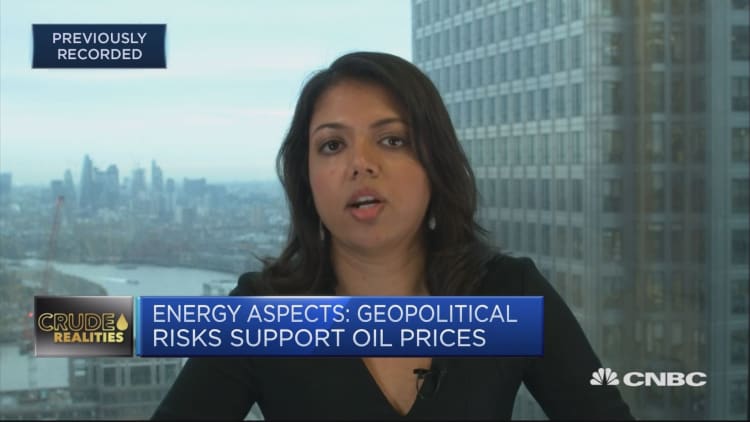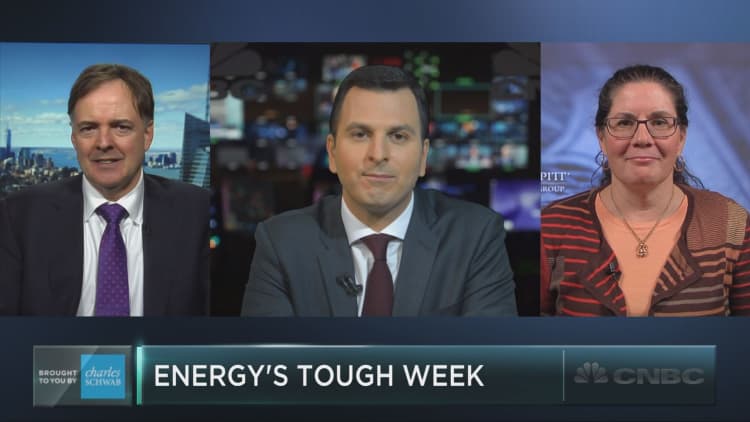Oil prices rose on Friday, retracing much of the week's losses, which were stoked by concerns about oversupply.
U.S. light crude ended Friday's session up $1.41, or 2.6 percent, to $56.55 a barrel. Benchmark Brent crude oil was up $1.23, or 2 percent, at $62.59 a barrel by 2:27 p.m. ET (1827 GMT), recovering ground after five sessions of losses.
"After five days of continuous losses, an upside correction is always on the cards. Such a jump, however will not mean a change of heart," said Tamas Varga, analyst at brokerage PVM Oil Associates.
A 5,000-barrel oil leak in South Dakota — that led TransCanada Corp to shut part of its Keystone pipeline system on Thursday — added to the bullish tone, PVM said.
But oil prices still posted their first weekly decline in six weeks, as signs of rising U.S. output were compounded by doubts that Russia would support an OPEC deal to extend curbs on production.

Signs this week of rising output in the United States have dampened the impact of a deal restricting output agreed by the Organization of the Petroleum Exporting Countries, Russia and several other producers.
Its curbs on oil output had propped up prices, taking Brent above $64 last week to highs not seen since 2015.
"Upside potential is being capped by oversupply concerns fueled by the surge in U.S. crude production," PVM said.
Weekly U.S. crude oil production hit a record of 9.65 million barrels per day (bpd) this month, meaning U.S. output has risen by almost 15 percent since their most recent low in mid-2016.
The number of rigs operating in U.S. oil fields was unchanged, after posting the largest rise since June in the previous week, oilfield services firm Baker Hughes reported.
The International Energy Agency said on Thursday that the U.S. would account for 80 percent of the global increase in oil production over the next 10 years.
"Let's assume that U.S. oil production continues its upward trajectory. They could very well be at 10 million bpd by the end of 2017," said Matt Stanley, a fuel broker at Freight Investor Services (FIS) in Dubai.
The production cutting agreement expires in March and was expected to be extended at OPEC's next meeting on Nov. 30. But signs that Russian support for the deal may be wavering have injected uncertainty and undermined the recent rally.

U.S. investment bank Jefferies said Russian backing for formalizing an extension appeared "questionable, even if only to defer the decision" to the first quarter of 2018.
Saudi Arabia has signaled a willingness to extend the curbs, which are due to expire in March 2018, with energy minister Khalid al-Falih saying on Thursday that targets to reduce global oil surplus would not be reached in time.
"We need to recognize that by the end of March we're not going to be at the level we want to be which is the five-year average, that means an extension of some sort," al-Falih said, referring to inventory levels in the developed world.
Some analysts said the market's focus on OPEC's output cuts was overstated, saying its impact on surpluses had been modest.
"After all, the need to further extend the agreement shows that the strategy is not working," commodity researchers at Commerzbank said, adding that the "key factor" was rising U.S. shale oil output.

